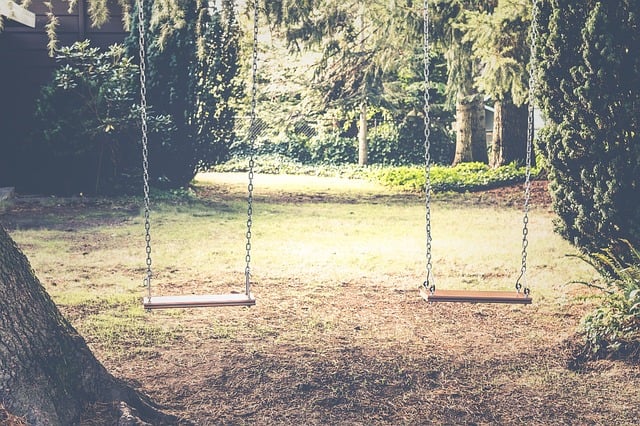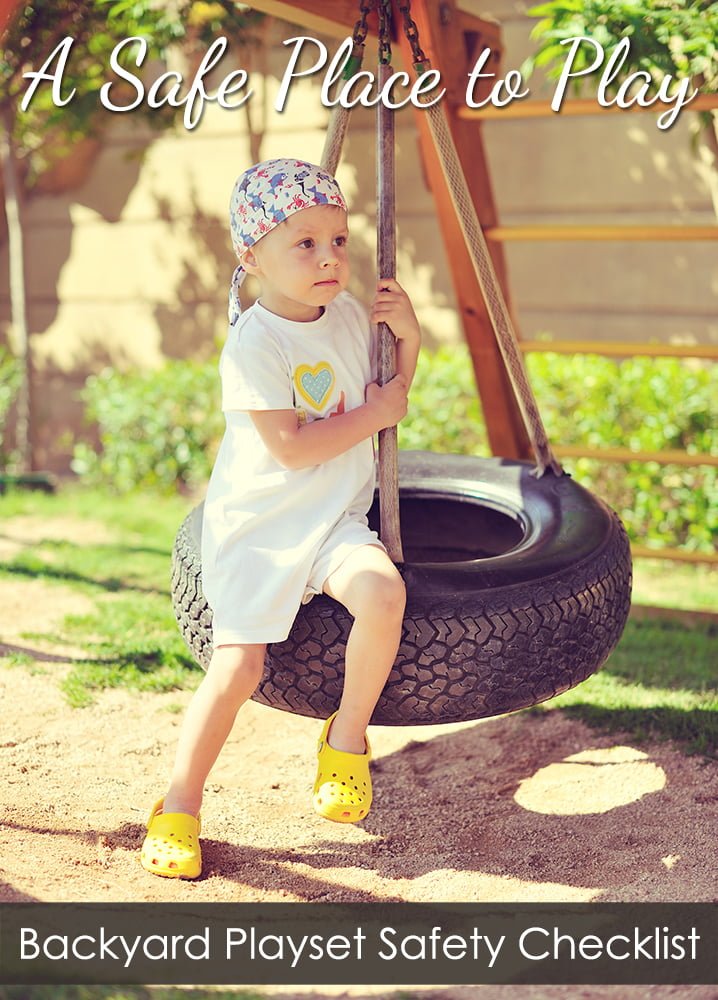A Safe Place to Play: Backyard Playset Safety Checklist
 Nature Deficit Disorder is the term Richard Louv and the Children and Nature Network coined to describe the severe lack of outdoor activity experienced by today’s youth. In fact, only about six percent of kids aged nine to 13 choose to play outside on their own each week.
Nature Deficit Disorder is the term Richard Louv and the Children and Nature Network coined to describe the severe lack of outdoor activity experienced by today’s youth. In fact, only about six percent of kids aged nine to 13 choose to play outside on their own each week.
As parents, we want to encourage our kids to get out as much as possible, but one concern is where our kids play. How safe is the local playground, really?
Instead of running detailed safety checks on the local municipal facilities every time your kids want to play, many parents are choosing to create their own play sets at home. Following are tips on how you can make sure your backyard playground is not only safe, but environmentally friendly, as well.
Green Your Lawn Care
It’s probably not the first thing you think about when putting together a kid-safe playground, but pesticides and fertilizers can be just as harmful as faulty equipment, if not more so. According to the Environmental Protection Agency, “Children’s behaviors, such as playing on the floor or on the lawn where pesticides are commonly applied, or putting objects in their mouths, increase their chances of exposure to pesticides.” The risks of being exposed to these types of chemicals range from nausea to serious and long-term developmental, neurological and reproductive disorders.
This doesn’t mean that you have to forego treating your lawn altogether, just watch what you feed your grass and use to deter unwanted pests. Some green lawn care alternatives include:
Insect control
Pyrethrin: Derived from chrysanthemums, pyrethrin has a very low toxicity and can be found in powder form. It should still be used cautiously, though, as it kills most insects, including beneficial bugs and honey bees.
Diatomaceous earth: The fossilized remains of diatoms, a tiny prehistoric bug, diatomaceous earth is an abrasive powder that kills both soft bodied insects and those with exoskeletons. It can be scattered around affected areas or sprinkled directly on plants.
Neem oil: An extract of the neem fruit tree, neem oil can be mixed with water and sprayed on plant leaves to kill immature insects. The oil does break down in prolonged sunlight and washes away with water.
Fertilizer
Seaweed: Seaweed can be purchased as a dried meal or a concentrated liquid extract for the purpose of fertilization. It can also be added in its raw form to compost piles to help speed up compost activation.
Worm castings: Also known as vermicompost, worm castings are the result of earthworm activity in a pile of compost. The organic material left over has a higher saturation of nutrients than compost that has decayed on its own and is an excellent soil conditioner.
Compost: Compost is a great, cheap fertilizer and can be found at most gardening supply stores. Additionally, check with your local municipal waste facility to see if they sell compost by the bag or truckload.
Much ado about mulch
Natural, soft wood mulch is the best landing material to put around a play set, cushioning falls from the monkey bars or swing set. Alternatives such as rubber mulch and rubber mats tend to become excessively hot in the sun and can burn children’s thinner, more sensitive skin.
Mulch that has been colored or treated with weed preventer are full of chemicals that children could ingest should they choose to chew on a chip or two, and sand tends to be used by local wildlife and outdoor cats as a litter box.
In the end, a gentle, deep fill of soft wood mulch such as pine, fir or cedar creates the softest, and safest, landing material for kids.
 Backyard Playset Safety Checklist
Backyard Playset Safety Checklist
There are several points of safety to look for while setting up a backyard playground. Apart from ensuring that all structures are secured by sinking the supports in concrete or bolting them to a solid surface, you should check that:
- Swings are at least 30 inches from support beams and set at least 24 inches apart
- There are only two swings per section
- Spaced bars such as ladders, guardrails, and monkey bars are either less than three and a half inches apart or greater than nine inches to prevent fall and choking hazards
- The area is free of roots, stumps, loose rope and rocks
- There are no protruding bolts, rusted sections or equipment with loose or broken parts
- Moving equipment has no potential pinch points
When putting together your own playground at home, it’s important to take extra care in setting up a fun and safe play environment.
What are some concerns you’ve had about setting up a home playground? What points would you add for parents looking to create their own home play set?

